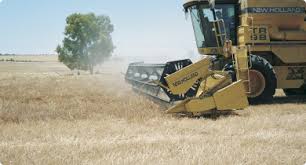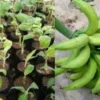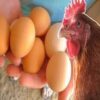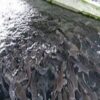Pastures are harvested at specific stages of their growth for conservation and subsequent utilization during periods of feed scarcity. Pasture harvesting is essential for ensuring a better supply of high-quality feed, as forage dry matter progressively decreases with advancing maturity.
The quality of conserved forage depends on the harvesting method and the moisture content at the time of harvest and storage. Various machinery is used for harvesting pasture species in Nigeria due to its high efficiency compared to manual methods, such as using cutlasses.
Read Also: Amazon Flowers: All You Need To Know About
Growth Stages For Cutting Pasture Species in Nigeria
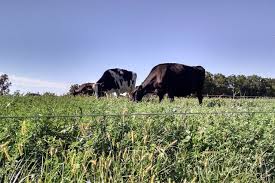
There are three key growth stages for cutting pasture species in Nigeria:
1. Pre-Flowering Stage: This stage occurs when the pasture species have more vegetative growth before flowering for seed production. It starts from the early stages of growth (3 weeks after planting) and lasts up to 8 or 9 weeks post-planting for grass species. For legumes, the timing depends on the species and management practices.
During this stage, the pasture has more leaves in the shoot, and the stems are not yet hard (lignified). The moisture content is high with little dry matter, so more material needs to be harvested before conserving it for future use.
2. Flowering Stage: In this stage, the pasture species produce flowers for seed production. Fertilized ova result in immature seeds, which can be grazed by livestock or defoliated for conservation. This stage is also known as the bloom stage.
The dry matter at this stage exceeds the moisture content, and farmers typically harvest pastures during this stage, depending on the type of enterprise.
3. Post-Flowering Stage: During this stage, seeds are set by the pasture species, but the moisture content of the seeds is still high compared to dry seeds. This stage is sometimes called the dough stage, similar to maize plants used for silage.
Forage at this stage contains a high level of fiber for structural support. Livestock consume very little of the forage material at this stage, even though the moisture content is low.
Moisture Reduction Techniques in Pastures
Forages are composed of both water and dry matter components. The proportion of these components depends on the growth stage of the forage. Moisture content remains a crucial factor to consider before using or storing any material for future use.
Moisture content can be reduced from the forage by wilting the material for a few days after cutting. The wilted forage can then be sliced into smaller pieces to facilitate further moisture loss. Additionally, frequent turning of the forage material in the field is necessary, depending on the dimension, density, and structure of the swath.
Read Also: Pumpkin Flowers (Pumpkin Blossoms): Complete Growing and Care Guide
Preservation Methods For Pastures in Livestock Feed Management
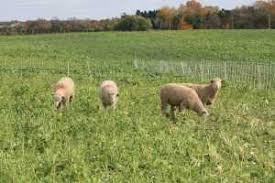
Pastures can be preserved in various forms based on the farmer’s preferences. These preservation techniques include:
1. Hay: Hay refers to conserved forage that is dried. The drying process can be done by spreading the forage in the sun or inside a barn. Sun-cured hay is cheaper to produce than barn-cured hay, but barn-cured hay is of higher quality due to reduced leaf loss compared to field drying. Hay is stored as rectangular or round bales, cubical bales, or as stacks. The quality of hay depends on the stage of cutting and the climatic conditions.
2. Silage: Silage is conserved forage that has undergone complete anaerobic fermentation for a period of 3 weeks. Fresh forage material is harvested at the appropriate stage of pasture growth. The material may be allowed to wilt or used directly to make silage while the moisture content is still high.
The forage must be cut into smaller pieces before being transported into a silo. A silo is a structure used to store silage. After uploading the forage into the silo, it must be well consolidated. Additives may be added to the material to facilitate fermentation.
A polythene cover is then used to seal the silo for a period of three weeks. Silage is generally more acceptable to livestock than hay due to its quality, although it is more expensive to produce.
3. Pellets: Pastures can also be preserved in the form of pellets. This process involves using a pelletizing machine after drying the forage into hay. Pelletizing makes it easier to package, handle, and transport the forage. Pellets are more readily accepted by livestock compared to hay.
This article has highlighted the harvesting and processing methods of pastures in Nigeria. Pastures are harvested only at certain stages of their growth, depending on the type of enterprise and the goals of the farmer. Understanding these methods helps ensure optimal feed quality and availability for livestock.
Do you have any questions, suggestions, or contributions? If so, please feel free to use the comment box below to share your thoughts. We also encourage you to kindly share this information with others who might benefit from it. Since we can’t reach everyone at once, we truly appreciate your help in spreading the word. Thank you so much for your support and for sharing!

